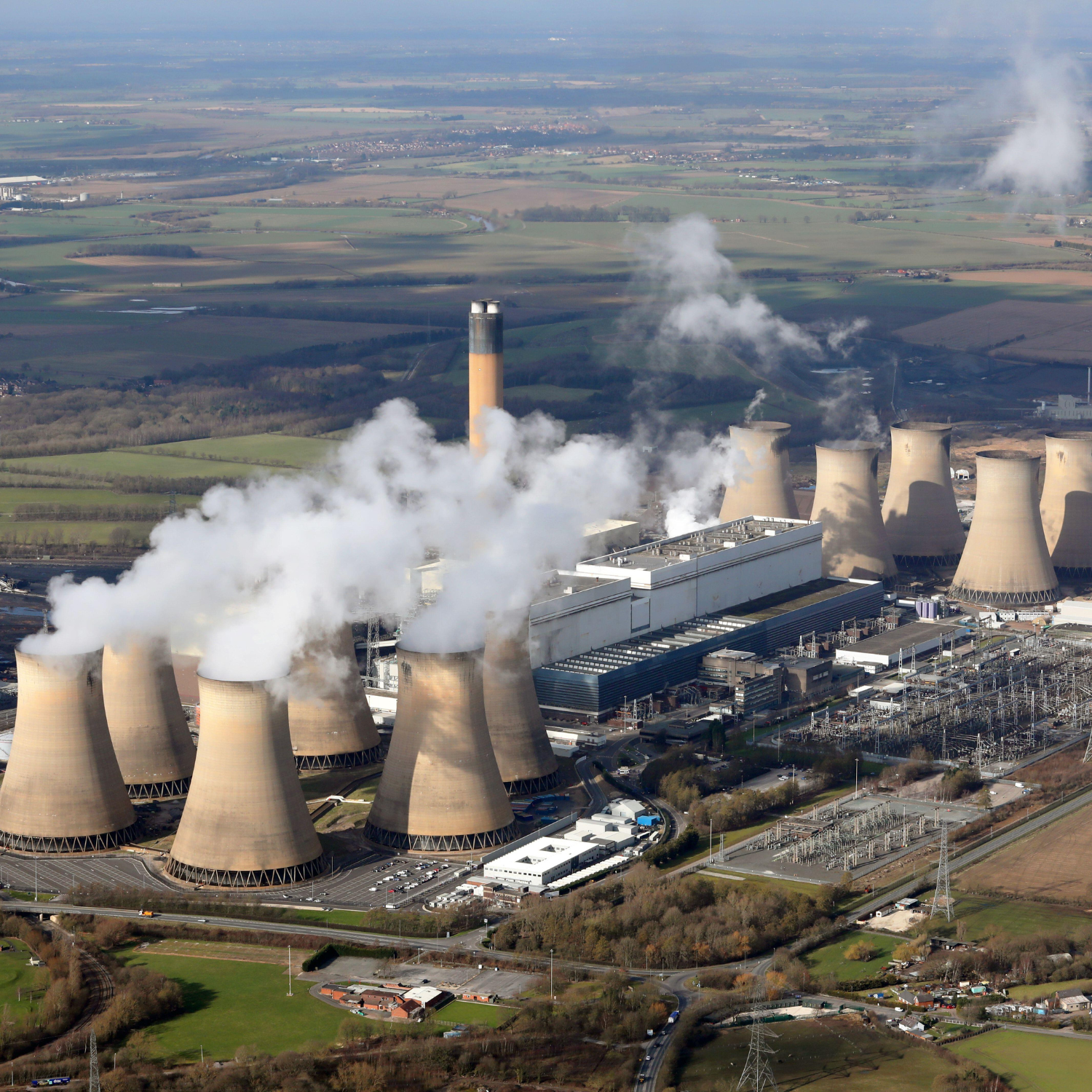
UK biomass emits more CO2 than coal
Burning wood is a larger emitter than coal in the UK, and is the electricity sector’s second largest CO2 emitter after fossil gas.
Table of Contents
Executive summary
UK biomass emits more CO2 than coal
- Burning wood is the electricity sector’s second largest CO2 emitter after fossil gas.
- Drax is the UK’s largest single source of CO2 emissions.
- Drax is the EU’s fourth largest CO2 emitter among coal plants when biomass emissions are included.
- These emissions are not counted in the UK’s emissions inventory – burning wood is treated as ‘carbon neutral’, despite evidence to the contrary.
- Drax is also one of the top 5 emitters in Europe of PM10 air pollution from power stations
UK Biomass CO2 emissions
How do UK biomass emissions measure up?
Burning wood is a larger emitter than coal in the UK
Burning biomass for power has been emitting more carbon dioxide in the UK than coal since 2019.
Due to its lower energy density than fossil fuels, wood – the main source of biomass used for generating power in the UK – has to be burned in higher volumes than coal to produce the same amount of energy. This means that burning wood emits more carbon dioxide per kWh of electricity than coal.[1]
Each year around 8 million tonnes of wood are burned in the UK to generate up to 12% of total UK electricity supply. Burning wood at this scale generates 15.6Mt of CO2 emissions each year [2] of which 13.3Mt alone comes from one power station – Drax, the world’s largest wood-burner. [3]
Emissions from burning wood in the UK now far exceed those from burning coal (including coal used in steel production) which amounted to 10Mt in 2020.[4] This means that wood burning is now the second largest contributor to the power sector’s CO2 emissions after fossil gas.
Is biomass carbon neutral?
Biomass industry claims burning wood is carbon-neutral, however the science disagrees
The scale of CO2 emitted by burning wood for power is not disputed by bioenergy companies. However it is argued that all emissions released are offset by the growth of new trees to replace those harvested for burning. This is a widely held assumption that is shared by the EU and UK government, and is the reason wood is considered a ‘carbon neutral’ or emissions-free source of energy, making it exempt from carbon-taxation and eligible for significant public subsidy.[5]
However, the reality of wood burning is far more complex than this simple assumption. A large and growing majority of scientific evidence shows that burning wood for power is often not carbon neutral – and in some circumstances can be a worse polluter than coal.
The European Academies Sciences Advisory Council (EASAC) states that using woody biomass for power “is not effective in mitigating climate change and may even increase the risk of dangerous climate change.”[6]
So in reality burning biomass could be contributing to climate change at very high costs to the energy bill payer.
Drax’s biomass emissions
How does Drax compare to Europe’s biggest emitters?
As a leading producer of biomass, Drax ranks highly for CO2 emissions and air pollution in Europe.
Drax is a top 5 CO2 emitter in Europe
Drax’s CO2 emissions are so high that when compared with Europe’s coal fleet, the power plant is the fourth largest CO2 emitter. Only Belchatow in Poland (30.1 MtCO2/yr) and Neurath (18.1 MtCO2/yr) and Boxberg (15.4 MtCO2/yr) in Germany emit more CO2 than Drax.[7]
Drax is by far the largest single CO2 emitter in the UK power sector with RWE’s Pembroke Gas Power Station coming in second with 4.3Mt CO2 emissions and is larger even than Port Talbot Steelworks’ annual emissions of 6.4Mt CO2.[8]
Drax is one of Europe’s top 5 emitters of PM10 air pollution
Burning wood not only emits large amounts of CO2 but also releases significant amounts of particulate matter (PM) into the atmosphere. The scale of wood burning by Drax each year means that the power station is one of the top five emitters of PM10 air pollution in Europe putting it in the same company as some of Europe’s worst coal power plants.[9]
Conclusion
Is BECCS worth investing in through subsidy?
Biomass generators are looking for new subsidies through BECCS – but will it deliver the negative emissions they promise?
Bioenergy with carbon capture and storage (BECCS) is increasingly seen as a key tool in reaching net-zero by policy-makers. If, as proposed by bioenergy industries, BECCS can actively remove CO2 from the atmosphere and generate ‘negative emissions’ then it can be deployed at scale to remove emissions released from hard to abate sectors such as aviation, heavy industry and agriculture.
However, the ability of BECCS to generate negative emissions relies on the carbon-neutral status of burning wood for power. BECCS therefore carries with it exactly the same risks around carbon impacts as wood-burning currently does. In other words, given the significant questions around the carbon neutral status of burning wood, the ability of BECCS to deliver negative emissions on the scale and in the time frame promised must also be brought into question.
BECCS has become prominent in policy-makers’ minds not as a result of scientific consensus around its ability to deliver negative emissions but because without full scrutiny it appears to be a ‘get out of jail free card’ that can be played to counteract any residual economy-wide emissions. Relying on BECCS to reach net zero jeopardises this transition and could draw vital energy and resources from decarbonisation efforts in other sectors as well as the deployment of genuinely negative emissions projects such as forestry and land-use change.
As the nation becomes more and more concerned with increasing power prices we should be very cautious about the financial implications of BECCS. As we have previously reported, BECCS is likely to be an extremely expensive technology the costs of which will fall to the energy bill payer.
Given the issues with biomass in the power sector and the great uncertainty around the true impacts of BECCS, investing our future and finance in the technology is a potentially very high-regrets policy. The government should only support BECCS at scale when it can be demonstrated to deliver real negative emissions.
Supporting Material
Methodology
References
- ‘Does replacing coal with wood lower CO2 emissions? Dynamic lifecycle analysis of wood bioenergy’ (2018), https://iopscience.iop.org/article/10.1088/1748-9326/aaa512/meta#erlaaa512s2
- Combined 2020 emissions of Drax (13.3Mt CO2) and Lynemouth (2.3Mt CO2) power stations – Lynemouth emissions calculated by Ember from company generation data as emissions are not published
- Drax Group plc Annual report and accounts 2020 (2021), https://www.drax.com/investors/announcements-events-reports/annual-reports-and-accounts/
- BEIS Provisional UK greenhouse gas emissions national statistics 2020 (2021), https://www.gov.uk/government/statistics/provisional-uk-greenhouse-gas-emissions-national-statistics-2020
- Annex IV of the EU ETS directive 2003/87/EC: “The emission factor for biomass shall be zero.
- Climate impact of woody biomass’ (2021), https://easac.eu/media-room/press-releases/details/easac-welcomes-that-the-jrc-report-strengthens-the-case-for-shorter-payback-periods-on-woody-biomass/
- EUETS portal (2021), https://ec.europa.eu/clima/ets
- Climate change CO2 investigation: The top 15 carbon polluters in the UK revealed
- ‘Europe Beyond Coal Database’ (2021), https://beyond-coal.eu/database/
Correction
An earlier version of this article incorrectly found that Drax was the 3rd largest CO2 emitter in Europe. Drax was in fact the 4th largest emitter in Europe in 2020. (Due to use of an older database which listed lower emissions for Boxberg lignite plant)
Related Content





